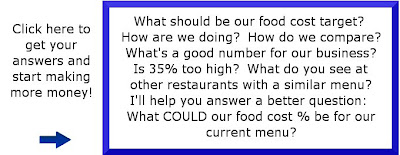My first assignment was with one of Bob's clients. This company had two catering facilities and used Eatec software. The chef had zero success building recipes despite purchasing the The Professional Chef

These add on modules were a huge time killer. I found myself gutting sophisticated recipes for chicken, beef and vegetable stocks and replacing the classic recipes with a package of soup base and a gallon of water. After hours of wasted time, I completely destroyed the chef's preliminary efforts and built the recipes from scratch.
I used the Professional Chef book's approach and started with Mise en Place and Stocks. Then I progressed to Soups and Sauces before starting work on entrees. After a week, I had all the major protein work done. The vegetables, starches, breakfast items, baked goods and desserts went much quicker.
During the project, my wife and I began to refer to this gig as "The $4,000 Mistake" since it consumed over 200 hours and 3 round trips (300 miles each trip) to finish.
The Food For Fifty book has a fantastic first chapter which is a must read for anyone trying this exercise for the first time. They focus on quantity food service and use the perspective of a caterer or institutional food service operator. Recipes all yield 50 portions. I took many of the chef's clippings from Bon Appetit and Gourmet and converted them to the 50 portion yield.
Before you start a project on a recipe costing program, you need to be very well organized. Create an outline. Take the most complex recipe and imagine you are building the database. You will find you need to stop work and create other sub-recipes first since you can't purchase many of the stocks, sauces, mixes and blends called for in the recipe. Each of these components requires a recipe.
These individual components called for by the complex recipes are the building blocks of a successful recipe model.
